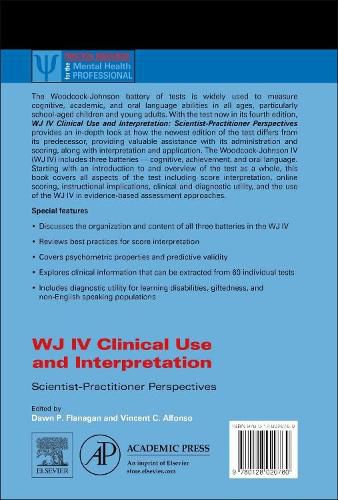Readings Newsletter
Become a Readings Member to make your shopping experience even easier.
Sign in or sign up for free!
You’re not far away from qualifying for FREE standard shipping within Australia
You’ve qualified for FREE standard shipping within Australia
The cart is loading…






WJ IV Clinical Use and Interpretation: Scientist-Practitioner Perspectives provides clinical use and interpretive information for clinical practitioners using the Woodcock-Johnson, Fourth Edition (WJ IV). The book discusses how the cognitive, achievement, and oral language batteries are organized, a description of their specific content, a brief review of their psychometric properties, and best practices in interpreting scores on the WJ IV.
Coverage includes the predictive validity of its lower order factors and the clinical information that can be derived from its 60 individual subtests. Part II of this book describes the clinical and diagnostic utility of the WJ IV with young children for diagnosing learning disabilities in both school age and adult populations, and for identifying gifted and talented individuals.
Additionally, the book discusses the use of the WJ IV with individuals whose culture and language backgrounds differ from those who are native English speakers and who were born and raised in mainstream US culture.
$9.00 standard shipping within Australia
FREE standard shipping within Australia for orders over $100.00
Express & International shipping calculated at checkout
WJ IV Clinical Use and Interpretation: Scientist-Practitioner Perspectives provides clinical use and interpretive information for clinical practitioners using the Woodcock-Johnson, Fourth Edition (WJ IV). The book discusses how the cognitive, achievement, and oral language batteries are organized, a description of their specific content, a brief review of their psychometric properties, and best practices in interpreting scores on the WJ IV.
Coverage includes the predictive validity of its lower order factors and the clinical information that can be derived from its 60 individual subtests. Part II of this book describes the clinical and diagnostic utility of the WJ IV with young children for diagnosing learning disabilities in both school age and adult populations, and for identifying gifted and talented individuals.
Additionally, the book discusses the use of the WJ IV with individuals whose culture and language backgrounds differ from those who are native English speakers and who were born and raised in mainstream US culture.